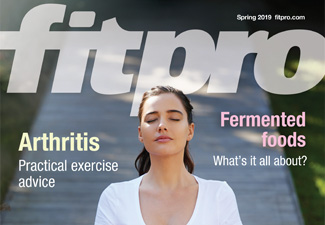Magazine References
Spring 2019

Pg 20-21
References
- Fildes, A., Charlton, J., Rudisill, C., Littlejohns, P., Prevost, A.T., Guildford, M.C. (2015) Probability of an obese person attaining normal body weight: cohort study using electronic health records, Am J Pub Health, 105(9):e54-59, doi: 10.2105/AJPH.2015.302773.
- Rollnick, S. (1998) Readiness, importance, and confidence: critical conditions of change in treatment, In W. R. Miller and N. Heather (eds), Applied clinical psychology, Treating addictive behaviors, pp. 49-60, New York, USA: Plenum Press, http://dx.doi.org/10.1007/978-1-4899-1934-2_4
- Knell, G., Qing, L., Gabriel, K.P., Shuval, K. (2018) Long-Term Weight Loss and Metabolic Health in Adults Concerned With Maintaining or Losing Weight, findings from NHANES, 93(11):1611-1616.
- Dutton, G.R., Perri, M.G., Dancer-Brown, M., Goble, M., Van Vessem, N. (2010) Weight loss goals of patients in a health maintenance organization, Eating Behaviour, 11(2):74-78, doi: 10.1016/j.eatbeh.2009.09.007.
- Colombo, O., Ferretti, V.V., Ferraris, C., Trentani, C., Vinai, P., Villani, S., Tagliabue, A. (2014) Is drop-out from obesity treatment a predictable and preventable event? Nutrition Journal, 13(13), doi: 10.1186/1475-2891-13-13.
- Tanamas, S.K., Magliano, D.J., Lynch, B., Sethi, P., Willenberg, L., Polkinghorne, K.R., Chadban, S., Dunstan, D., Shaw, J.E. (2012) The Australian Diabetes, Obesity and Lifestyle Study, Melbourne: Baker IDI Heart and Diabetes Institute.
- Miller, W.R. and Rollnick, S. (2002) Motivational interviewing: preparing people for change (2nd ed.), New York, USA: Guilford Press.
- Santos, I., Sniehotta, F.F., Marques, M.M., Carraca, E.V., Teixeira, P.J. (2017) Prevalence of personal weight control attempts in adults: a systematic review and meta‐analysis, Obesity Reviews, 18(1):32-50, doi: 10.1111/obr.12466.
Pg 36-39
References
Pg 40-41
References
- Marco, M. (2017) Health benefits of fermented foods: microbiota and beyond, Curr Opin Biotechnol, 44:94-102.
- Rezac, S. (2018) Fermented Foods as a Dietary Source of Live Organisms, Front Microbiol, 24:9.
- Graf, D., Di Cagno, R., Fåk, F., Flint, H.J., Nyman, M., Saarela, M., Watzl, B. (2015) Contribution of diet to the composition of the human gut microbiota, Microbial Ecology in Health and Disease, 26:10.3402/mehd.v3426.26164.
- Sekirov, I., Russell, S.L., Antunes, L.C., Finlay, B.B. (2010) Gut microbiota in health and disease, Physiological Reviews, 90:859-904.
- Heiman, M.L., Greenway, F.L. (2016) A healthy gastrointestinal microbiome is dependent on dietary diversity, Molecular Metabolism, 5:317-320.
- Vīna, I., Semjonovs, P., Linde, R., Deniņa, I. (2014) Current evidence on physiological activity and expected health effects of kombucha fermented beverage, J Med Food, 17(2):179-188.
- Nummer, B.A. (2013) Kombucha brewing under the Food and Drug Administration model Food Code: risk analysis and processing guidance, J Environ Health, 76(4):8-11.
- Centers for Disease Control and Prevention (1995) Unexplained severe illness possibly associated with consumption of kombucha tea, cdc.gov/mmwr/preview/mmwrhtml/00039742.htm
- Shiby, V.K. et al. (2013) Fermented milk and milk products as functional foods, a review, pp. 53.
Pg 42-45
References
Pg 48-51
References
- gov.uk/government/publications/better-mental-health-jsna-toolkit/4-perinatal-mental-health
- American College of Obstetricians and Gynecologists (2002) Exercise during Pregnancy and the Postpartum Period, ACOG Committee Opinion, no. 267, reaffirmed 2009, acog.org/Clinical-Guidance-and-Publications/Committee-Opinions/Committee-on-Obstetric-Practice/Physical-Activity-and-Exercise-During-Pregnancy-and-the-Postpartum-Period
- Fitness Australia Pre and Postnatal Exercise Guidelines, https://bp-fitnessaustralia-
- production.s3.amazonaws.com/uploads/uploaded_file/file/219/Pre-and-Post-Natal-Exercise-Guidelines.pdf
- hsph.harvard.edu/nutritionsource/borg-scale/
- Warland, J. (2017) Back to basics: avoiding the supine position in pregnancy, The Journal of Physiology, 595(4):1017-1018.
- ACOG Committee (2015) Opinion No. 650: Physical Activity and Exercise During Pregnancy and the Postpartum Period, 126(6):e135-42, acog.org/-/media/Committee-Opinions/Committee-on-Obstetric-Practice/co650.pdf
- Bullock-Saxton, J.E. (1991) Changes in posture associated with pregnancy and the early post-natal period measured in standing, Physiotherapy Theory and Practice, 7:103-109.
- Bullock-Saxton, J. (1998) Musculoskeletal Changes Associated with the Perinatal Period, In: R. Sapsford, J. Bullock-Saxton and S. Markwell (Eds.), Women’s Health, a textbook for physiotherapists, pp. 134-148, London, UK: WB Saunders Company Ltd.
- Ostgaard, H.C., Zetherstrom, G., Roos-Hansson, E., Svanberg, B. (1994) Reduction of back and posterior pelvic pain in pregnancy, Spine, 19:894-900.
- Marnach, M.L., Ramin, K.D., Ramsey, P.S., Song, S.W., Stensland, J.J. and An, K.N. (2003) Characterization of the Relationship Between Joint Laxity and Maternal Hormones in Pregnancy, Obstetrics and Gynecology. 101(2):331-335.
- Urquhart, D.M., Hodges, P.W., Allen, T.J. and Story, I.H. (2005) Abdominal muscle recruitment during a range of voluntary exercises. Manual Therapy, 10(2):144-153.
- Urquhart, D.M., Hodges, P.W. and Story, I.H. (2005). Postural activity of the abdominal muscles varies between regions of these muscles and between body positions, Gait Posture, 22(4):295-301.
- Neumann, P. and Gill V. (2002) Pelvic floor and abdominal muscle interaction: EMG activity and intra-abdominal pressure, International Urogynaecology Journal, 13:125-132.
- Bø, K., Sherburn, M. andAllen, T. (2003) Transabdominal ultrasound measurement of pelvic floor muscle activity when activated directly or via transversus abdominis muscle contraction, Neurourol Urodyn, 22(6):582-588.
- Thompson, J., O’Sullivan,P., Briffa, N. and Neumann, P. (2006) Differences in muscle activation patterns during voluntary pelvic floor contraction and valsalva manoeuvre, Neurology and Urodynamics 25:148-155.
- Thompson, J., O’Sullivan, P., Briffa, N. and Neumann, P. (2007) Comparison of transperineal and transabdominal ultrasound in the assessment of voluntary pelvic floor muscle contractions and functional manoeuvres in continent and incontinent women, Int Urogynecol J Pelvic Floor Dysfunction, 18(7):779-786.
- Thompson, J. A. and O’Sullivan, P.B. (2003) Levator Plate Movement during Voluntary Pelvic Floor Muscle Contraction in Subjects with Incontinence and Prolapse: a cross-sectional study and review, International Urogynecology Journal and Pelvic Floor Dysfunction, 14(2):84-88.
- Thompson, J., O’Sullivan, P., Briffa, K. and Court, S. (2005) Assessment of pelvic floor movement using transabdominal and transperineal ultrasound, International Urogynaecology Journal, 16:285-292.
- Morkved, S. and Bø, K. (2014) Effect of Pelvic Floor Muscle Training during Pregnancy and after Childbirth on Prevention and Treatment of Urinary Incontinence: a systematic review, British Journal of Sports Medicine, 48(4):299-310.
- Morkved, S., Bo, K., Schei, B. and Kjell, A. (2003) Pelvic floor muscle training during pregnancy to prevent urinary incontinence: a single-blind randomised controlled trial, Obstetrics and Gynecology, 101(2):313-319.
- Sapsford, R., Richardson, C. and Stanton, W. (2006) Sitting posture affects pelvic floor muscle activity in parous women: an observational study, Australian Journal of Physiotherapy, 52(3):219-222.
- Sapsford, R., Hodges, P. and Richardson, D. (1997) Activation of pubococcygeus during a variety of isometric abdominal exercises, conference abstract, International Continence Society, Yokohama, pp. 115.
- Sapsford, R., Hodges, P., Richardson, C., Cooper, C. and Markwell, S. (2001) Co-activation of the abdominal and pelvic floor muscles during voluntary exercises, Neurology and Urodynamics, 20:31-42.
- Gizzo, S., Gangi, S.D., Noventa, M., Bacile, V., Zambon, A. and Nardelli, G.B. (2014) Women’s Choice of Positions during Labour: Return to the Past or a Modern Way to Give Birth? A Cohort Study in Italy, Biomed Research International, 638093.
- Michel, S.C., Rake, A., Treiber, K., Seifert, B., Chaoui, R., Huch, R., Marincek, B. and Kubik-Huch, R.A. (2002) MR obstetric pelvimetry: effect of birthing position on pelvic bony dimensions, American Journal of Roentgenology, 179(4):1063-1067.
- Returning to Sport and Exercise Factsheet, pelvicfloorfirst.org.au/pages/returning-to-sport-or-exercise-after-the-birth.html


